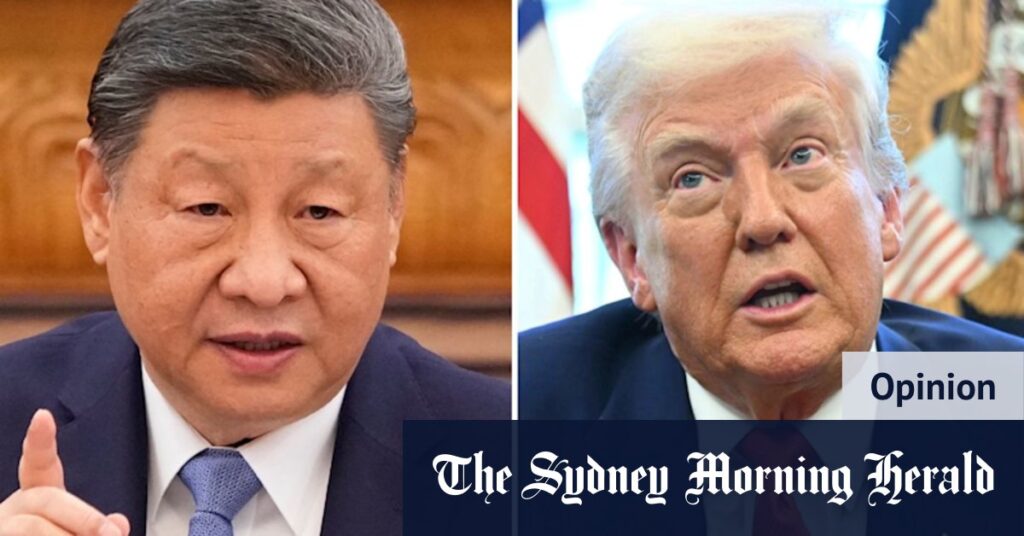
The race for dominance in artificial intelligence (AI) is intensifying between the United States and China, with both nations vying to set the global standards for AI technologies. The stakes in this high-tech contest are immense, as AI promises to reshape industries and economies worldwide. The U.S. administration, under the leadership of President Trump, is pushing for America’s AI sector to become the global benchmark, while China is advocating for a collaborative international framework to govern AI development.
In a recent statement, White House science and technology director Michael Kratsios emphasized the U.S. ambition to export its AI technologies globally, aiming to establish an American AI ecosystem as the preferred choice worldwide. This strategy involves leveraging U.S. cloud services, chips, and algorithms. Meanwhile, China’s premier, Li Qiang, highlighted the challenges posed by access bottlenecks, such as semiconductors, which could limit AI advancements to a few countries and companies.
Contrasting Approaches to AI Development
The U.S. approach under Trump is characterized by a laissez-faire attitude, with a focus on deregulation to fast-track AI projects. This strategy aligns with the interests of major U.S. tech companies, which have been influential in shaping policy. Trump has tasked his technology advisers with developing new AI policies within six months, aiming to boost U.S. technology exports and eliminate perceived biases from AI systems.
Conversely, China is advocating for a more inclusive and collaborative approach. At the World Artificial Intelligence Conference in Shanghai, China proposed the creation of a new international organization to develop AI, emphasizing the need for a global governance framework. China’s strategy includes an open-source approach, with companies like DeepSeek and Alibaba making their AI models accessible to developers worldwide.
Global Implications and Strategic Divergence
The divergent strategies of the U.S. and China could accelerate AI development but also heighten risks. The U.S. is focused on developing artificial general intelligence (AGI), aiming for human-level AI capabilities. In contrast, China appears more focused on practical AI applications, reflecting its emphasis on industrial and economic applications.
According to experts, these differing goals may be influenced by the U.S. export controls that restrict China’s access to advanced semiconductors and chip-making equipment. This limitation may have prompted China to prioritize achievable AI applications over the pursuit of AGI.
Regulatory Perspectives in Europe and Australia
While the U.S. and China pursue their respective AI strategies, Europe has taken a different path, focusing on stringent regulations. European policies aim to prohibit exploitative AI practices and ensure transparency in AI systems. These regulations cover critical sectors like infrastructure and employment, emphasizing the protection of copyright and risk management.
In Australia, the approach to AI regulation is still evolving, with a preference for “light touch” oversight. The country is considering safeguards to balance innovation with risk management, reflecting a cautious approach to AI governance.
Looking Ahead: The Future of AI Leadership
The competition between the U.S. and China for AI leadership is not just about technological supremacy but also about shaping the future of global governance. The U.S. aims to lead by exporting its AI technologies, while China seeks to influence international standards through collaboration and open-source initiatives.
The outcome of this rivalry will have significant implications for the global AI landscape. As AI continues to evolve, the need for coordinated governance and ethical considerations becomes increasingly critical. The world watches as these two superpowers chart their paths, each hoping to define the future of artificial intelligence.
“We want the entire world to be running on American artificial intelligence stack. That is our cloud, our chips, our algorithms, all of that needs to be exported and packaged to the world so that we become the ecosystem of choice globally,” said Michael Kratsios.
“We should strengthen coordination to form a global AI governance framework that has broad consensus, as soon as possible,” stated Li Qiang.
As the battle for AI supremacy unfolds, the global community must navigate the complexities of innovation, regulation, and ethical considerations to ensure a balanced and equitable future in the age of artificial intelligence.






